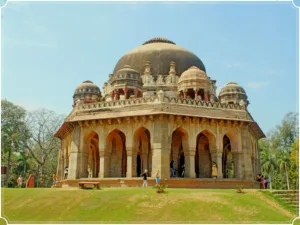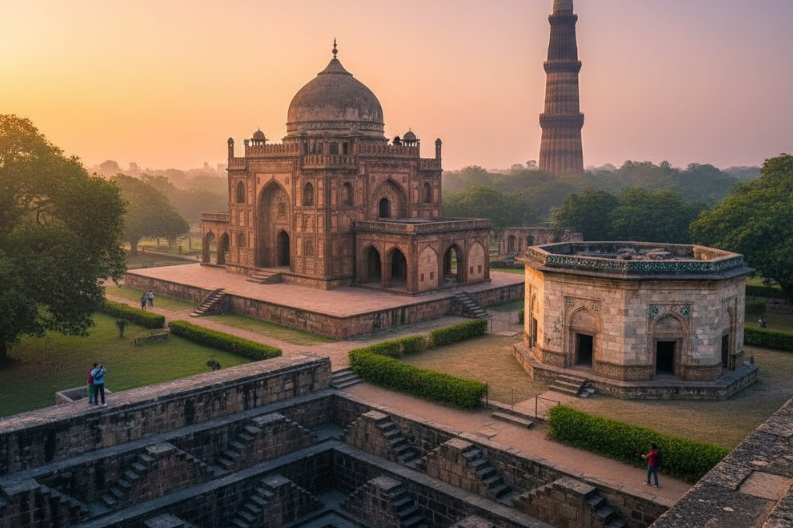A symbol of national, historical, and architectural value, Lodhi Gardens is a favorite holiday destination for Delhiites. Originally named after the wife of British resident Lady Willingdon, the gardens were the capital’s premier retreat. Today it has been transformed into a lush, shady garden with attractive monuments and plantings. The beauty of Lodhi Gardens lies primarily in its architecture.
About Lodhi Gardens of Delhi
The park consists of several notable historical structures, including tombs, a lake, and the Atpula-8 column bridge. You will also come across an artfully crafted glass garden where you can see the wonders of Bonsai Park and the rose garden. This attractive plant blooms and glows in the morning.
It offers both educational and recreational activities where you and your family can learn about the backstory and the daring story behind it. From local runners to hikers, this gem of Delhi is the epitome of historical beauty.
Tourists will see the magnificent domed structure, find the perfect picnic spot and marvel at the Indo-Islamic sculptural architectural elements. It’s a wonderful mix of nature, culture, history, and fun. After visiting Lodhi Gardens, you can move on to other attractions at Lodhi Manor. From Khan Market to Safdarjung Tomb, the area offers plenty of choices.
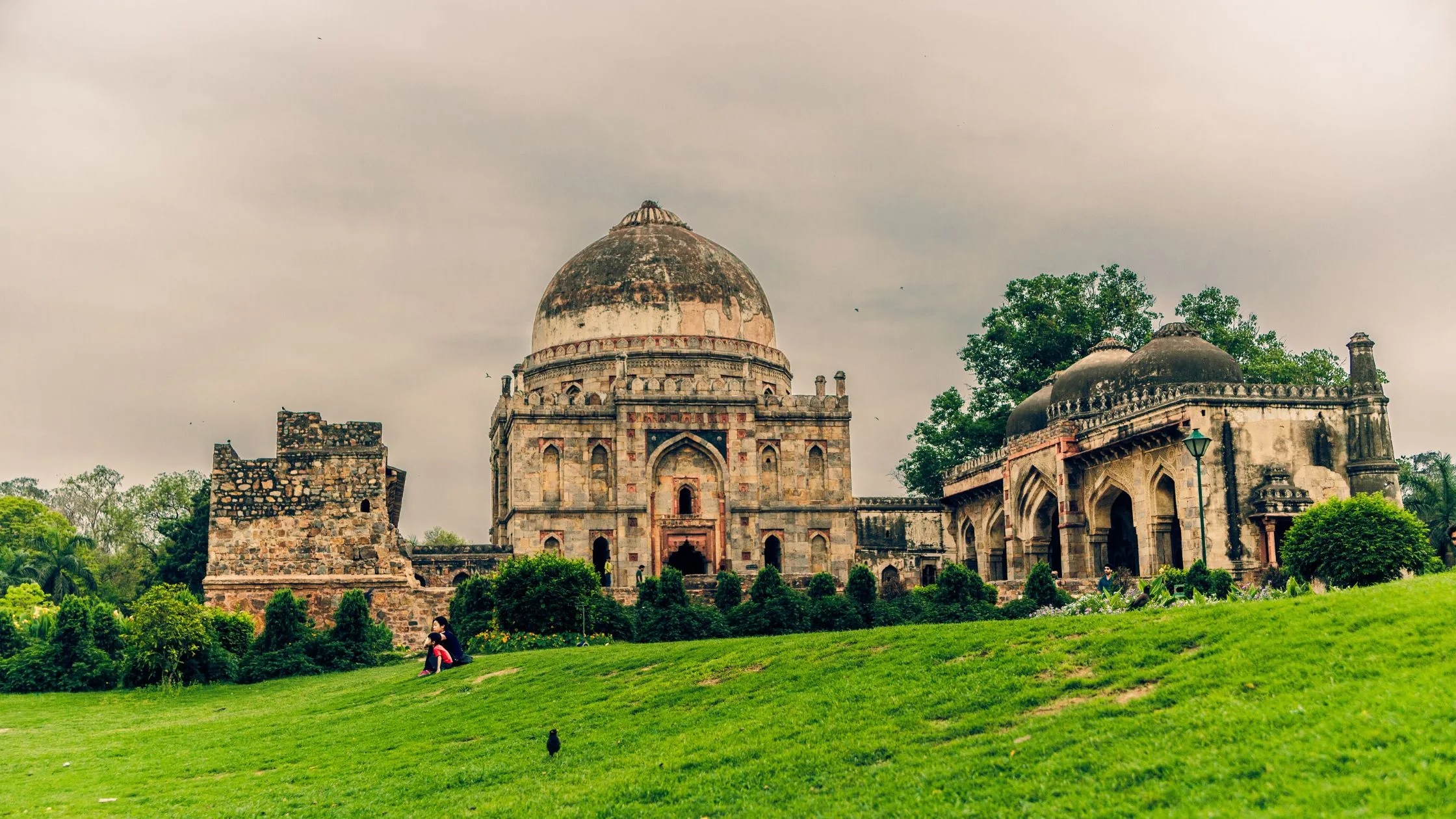
Or, if you’re an art fanatic, you can visit the Habitat for Humanity Centre in India. There will be continuous entertainment in and around Lodhi Gardens. A perfect blend of history and nature, be sure to visit Lodhi Gardens, the jewel of Delhi in the city.
History of Lodhi Gardens
The history of Lodhi Gardens dates back to the 14th and 15th century Said and Lodhi rulers. After the end of the Lodhi Dynasty and the Delhi Sultanate in 1526, Mughal rule was established in India with the invasion of Emperor Babur.
Although there was no impression of the Lodhi gardens, Lodhi Gardens were designed by the British colonial government in 1936 for Lady Willingdon, wife of the then Governor-General of India. In 1968, American landscape architect Garrett Eckbo and architect Joseph Allen Stein renovated the garden.
The renovations added a conservatory, lake, Bonsai Park, and rose garden. The Lodhi Gardens, also known as the Lodhi Gardens, dates back to 1444 when his son and last ruler of the dynasty of Ala-ud-din Alam Shah built the tomb of Muhammad Shah, the Sayyid ruler of the Delhi Sultanate. Another important tomb in this area is the tomb of Sikander Lodhi of the Lodhi dynasty, built in 1517 by his son Ibrahim Lodhi.
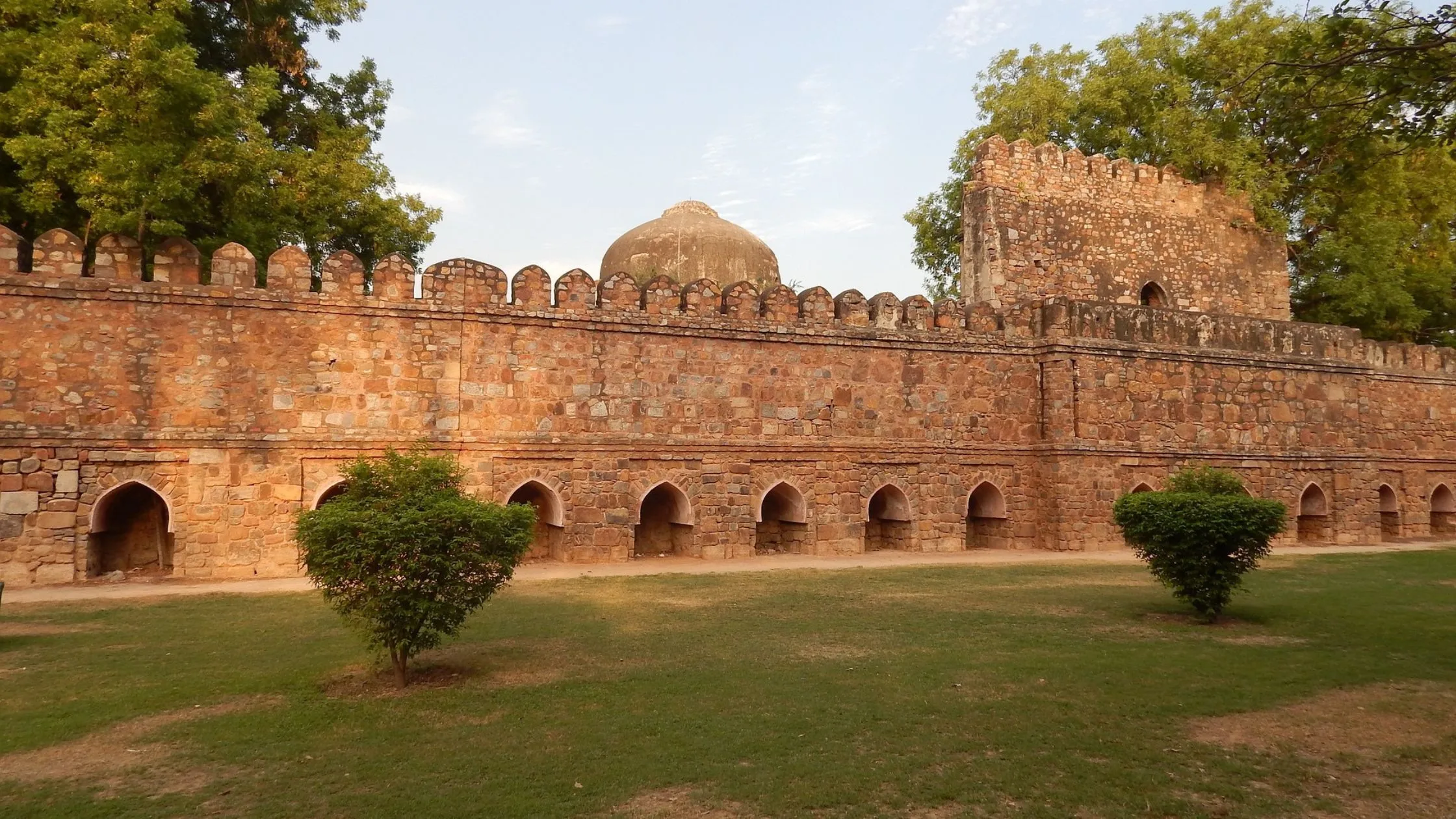
A few more buildings were built here during the reigns of the Sayyids and Lodhis. When Emperor Akbar ascended the throne of Delhi, he used the Lodhi gardens as her observatory and kept her records in the library built for her. Within hours, the area around the tomb turned into two villages.
And only in 1936, when the British came to power, did the villagers go out to repair the garden. Lady Willingdon, the wife of the Marquis of Willingdon (then Viceroy of India), landscaped the grounds and turned them into beautiful gardens. The gardens were officially opened in 1936 and named Lady Willingdon Park in honor of her efforts.
When the country gained independence in 1947, it was renamed Lodhi Gardens. American architect Joseph Stein, who built a greenhouse in the garden in 1968, reawakened the garden.
Lodhi Garden Architecture
Mohammed Shah’s mausoleum architecture combines Islamic and Hindu styles. It consists of a huge central dome and eight chhatris. The eight small domed structures have lotus-shaped tips and decorative pinnacles at the corners. Its shape resembles an octagonal room, making it a landmark.
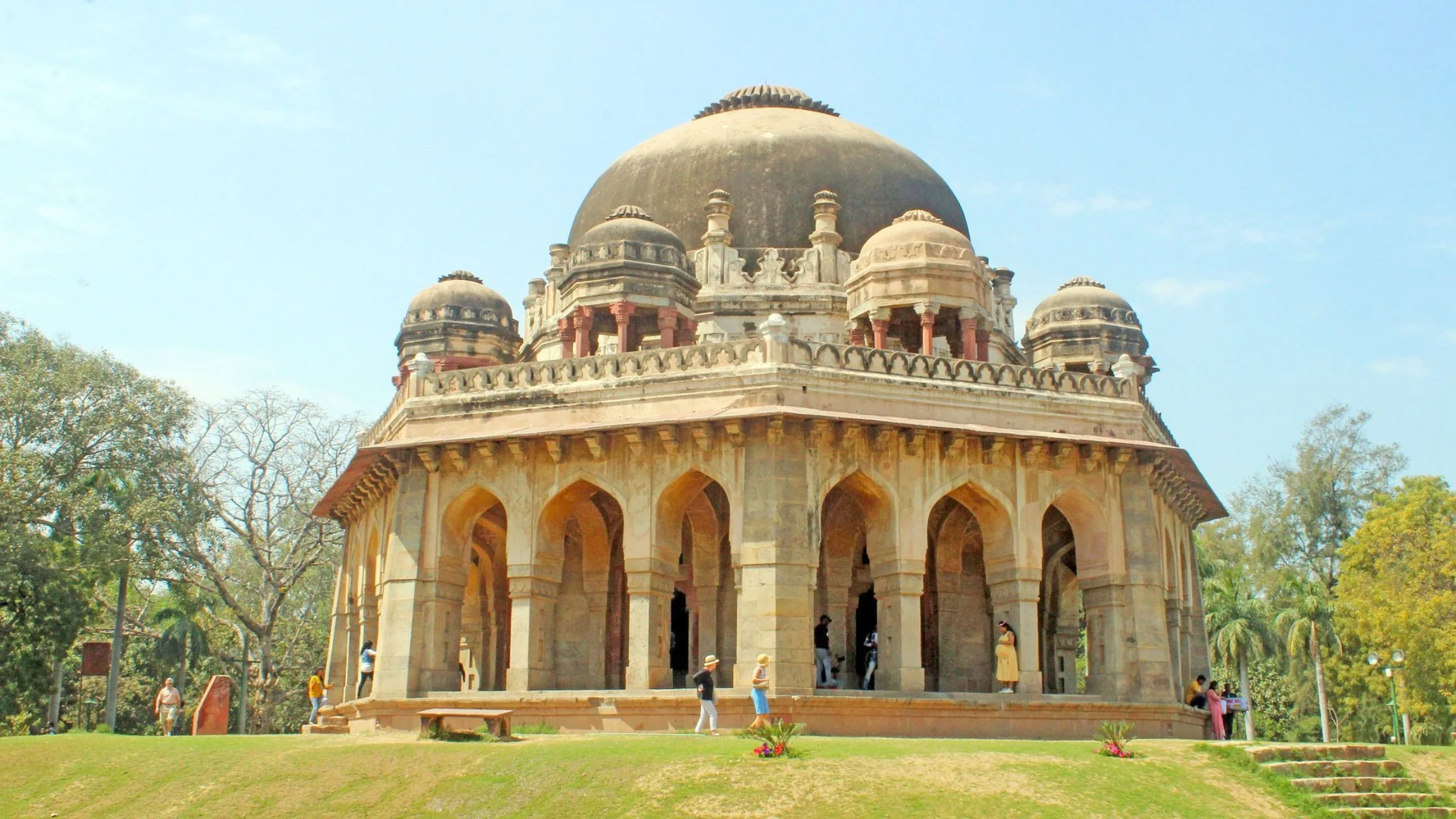
Surprisingly, the mausoleum of Sikander Lodhi gets a revelation from the tomb of Muhammad Shah. Its architecture is defined by the Indo-Islamic style. The structure consists of the same octagonal structure with a central dome except for the chhatri. It boasts Mughal architecture on its walls, and you can enter the tomb via a domed walkway.
The architecture of Lodhi Gardens is a perfect combination of different architectural styles and delicate carvings. The nearly 90-acre garden was designed by architect Garrett Eckbo and architect Allen Stein. They established a glasshouse in the garden and a lake with a fountain which further led to the addition of a bonsai park and rose garden.
A few meters from Sheesh Gumbad Bara Gumbad in Lodhi Gardens, Sheesh Gumbad is a mix of Hindu and Islamic architecture. The tomb, also known as the glazed dome because of its blue tint, is structurally very similar to Bara Gumbad. The dome of the tomb was initially decorated with blue inscriptions, and the interior decorations were decorated with floral patterns and inscriptions from the Koran.
Things to See in Lodhi Gardens
In addition to the mausoleums of the two Sultans, several other edifices are worth a visit, such as:
- Bara Gumbad, or Big Dome, is a huge rubble dome that Sikander Lodhi built in 1490
- The three-domed mosque is located in the Bara Gumbad complex
- Shish Gumbad, or Glazed Dome, is a tomb that is believed to be built by Ibrahim Lodhi and is decked with enameled blue tiles
- Athpula, or Eight Pier Bridge, is a beautiful 16th-century stone bridge constructed during Emperor Akbar’s reign, consisting of seven arches and supported by eight columns
- A lake
- A glasshouse
- National Bonsai Park
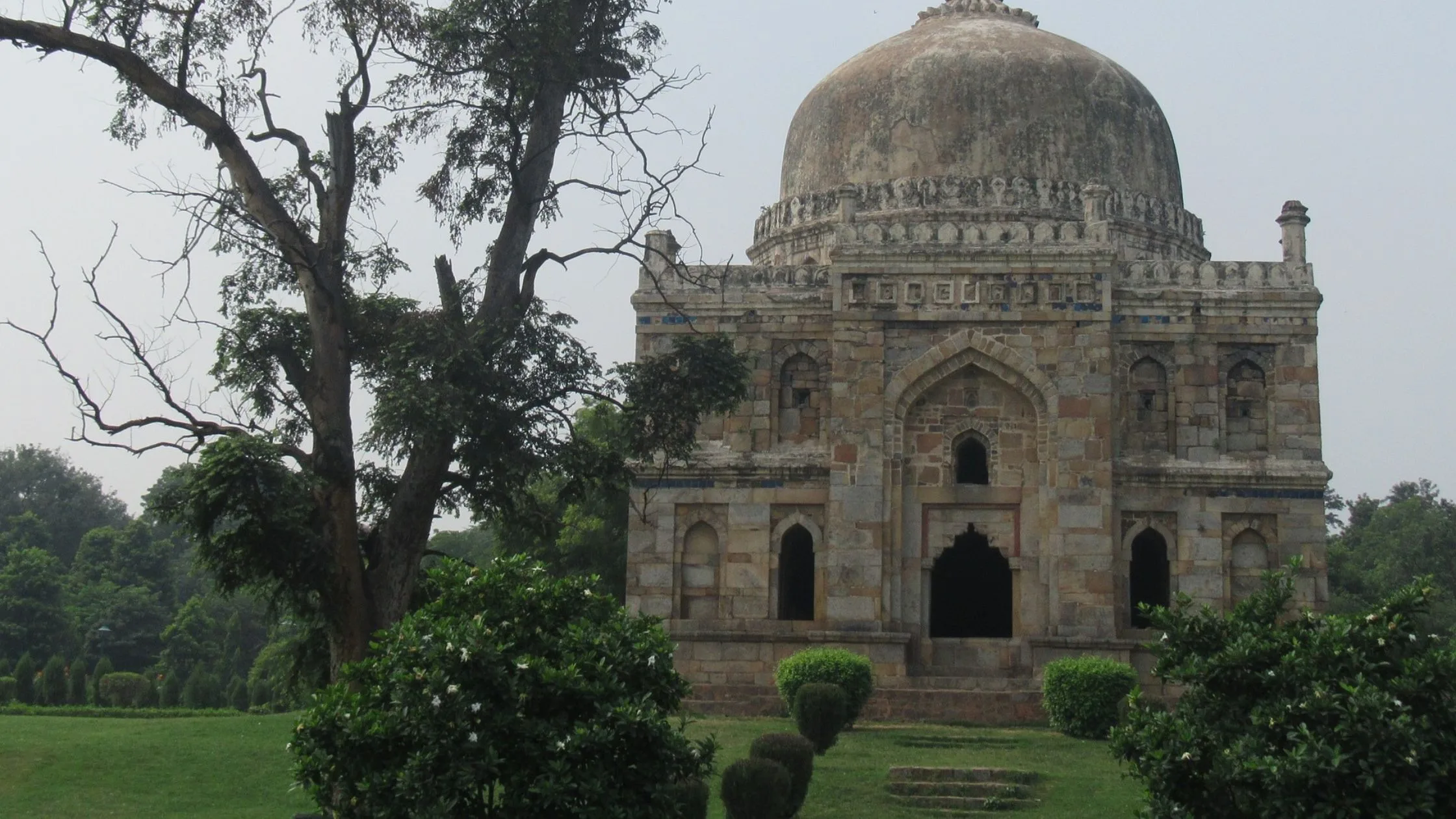
Monuments at Lodhi Gardens Delhi
Mohammed Shah Tomb at Lodhi Gardens Built by Ala-ud-din Alam Shah as a tribute to Mohammed Shah, the third emperor of the Sayyid dynasty, this is the earliest of the tombs here. He built it in 1444.
Located to the southwest of Lodhi Gardens, visitors can also see the tomb from the road. This octagonal tomb has a central room surrounded by a veranda. There are 3 archways.
Noteworthy is the carving of the dome with lotus flowers covering it. There are eight tombs, the center of which belongs to Muhammad Shah.
The tomb of Sikander Lodhi in Lodhi Gardens, the tomb of Sikander Lodhi, was built-in 1517 by Ibrahim Lodhi, the last ruler of the Lodhi dynasty, and is located in the northwest corner. Lodhi Gardens – north of Sisi Gumbad. There is no chhatri in this tomb, but it bears some resemblance to the tombs of Muhammad Shah and Mubarak Shah. A square garden surrounds it.
Bara Goombad of Lodhi Gardens was built during the reign of Sultan Sikander Lodhi in 1940. Bara Goombad is one of the largest tombs here, and some historians consider it as a gateway to other mosques in the area.
It is a square-shaped tomb with a huge dome. It is located northeast of Muhammad Shah’s tomb. The tomb boasts its stucco and beautiful paintings. Even though there is no tomb within this tomb, people believe that one of the unidentified dignitaries was buried there. Next to the tomb is the Bara Gumbad Masjid.
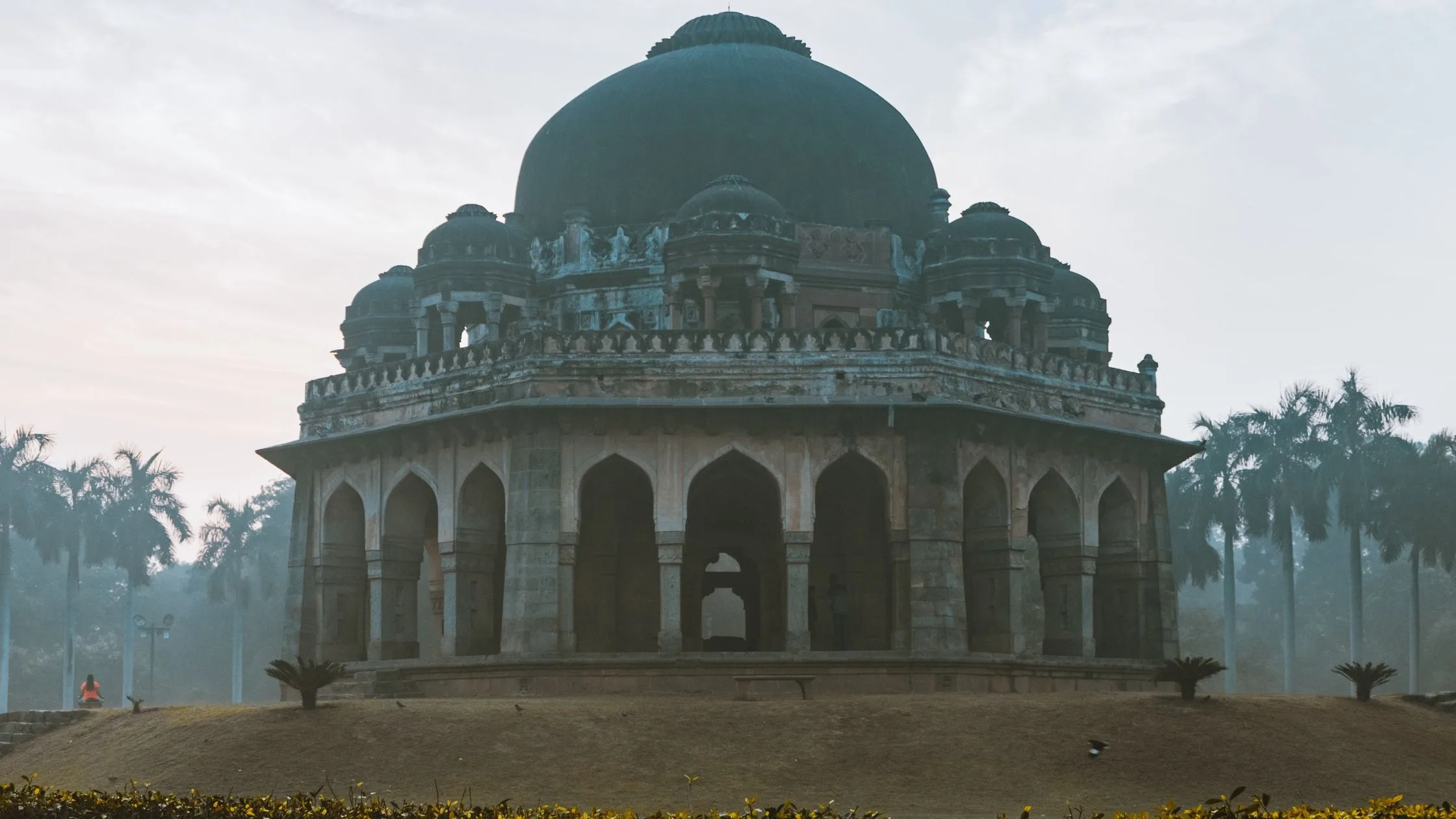
Little-known facts about Lodhi Gardens
- One of the gates dating back to the British era is still in use.
- New Delhi City Council has attached QR codes to 100 trees in the garden to prevent anyone from cutting them down.
- Atpula – In Lodhi Garden To the east of Sikander Lodhi’s tomb is Atpula. Historians believe that the Mughal emperor Akbar built it. A stone bridge of arches and columns crosses a small waterway in the garden.
- Flora and Fauna of Lodhi Gardens Delhi – Lodhi Gardens possess a rose garden, a lake, a greenhouse, and many trees and plants. Here you can also see feathered fauna such as warblers, parrots, conifers, kites, owls, kingfishers, and hornbills.
Conclusion
Lodhi Gardens is an urban park located in New Delhi, India, and quite similar to Humayun’s Tomb. It covers an area of over 90 acres (360,000 m2) and contains the 15th-century tombs of Muhammad Shah, Sikandar Lodhi, Shishi Gumbad, and Bara Gumbad.
An architectural masterpiece from Lodhis, who ruled parts of northern India, Punjab, and Khyber Pakhtunkhwa in present-day Pakistan from 1451–1526. Currently, the Archaeological Survey of India (ASI) protects this site. Lodhi Gardens is popular for sports and hiking. Located between Khan Market on Lodhi Road and Safdarjung’s Tomb, this garden is a popular morning walk for Delhi people.

